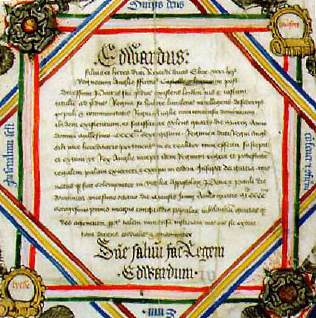The Wars of the Roses (1)
Foreign wars, civil wars, famine and economic hardship: the period that Shakespeare dramatizes in his history plays was politically unstable in the extreme. According to Shakespeare, the most devastating civil wars in England before the Civil War of the seventeenth century were fought over many issues, summarized by a symbol: whether the red rose of Lancaster or the white rose of York should hold the throne.
As the family tree of the houses of York and Lancaster shows, Henry IV and V were descended from the Duke of Lancaster. After the death of Henry IV (part two), and the accession of Henry VI at the still squalling age of nine months, the crown was in dispute: it was worn by seven kings (heads) in 25 years (between 1460 and 1485).
A table of heads rolling
| Henry V | Came to the throne aged 25. | Reigned 9 years. | Died in 1422. |
| Henry VI | Came to the throne aged 9 months. | Reigned 39 years. | Deposed in 1461. |
| Edward IV | Came to the throne aged 19. | Reigned 10 years. | Defeated in 1470. |
| Henry VI | Restored to the throne in 1470. | Reigned one year. | Murdered in 1471. |
| Edward IV | Regained the throne in 1471. | Reigned another 12 years. | Died in 1483. |
| Edward V | Came to the throne aged 13. | Reigned three months. | Murdered?* in 1483. |
| Richard III | Came to the throne aged 31. | Reigned two years. | Killed in 1485. |
| Henry VII | Came to the throne aged 29. | Reigned 24 years. | Died in 1509. |
Footnotes
-
Murdered?
One of the "Princes in the Tower," he was supposed, according to the Tudor Myth, to have been murdered by Richard III; no proof, however, has ever been found to substantiate this claim.
